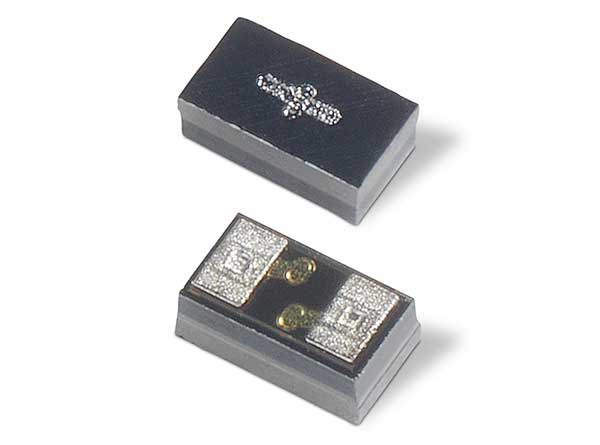Littlefuse Inc., a global leader in manufacturing circuit protection products, has launched a series of TVS Diode Arrays. These are designed to protect the electronic equipment against destructive electrostatic discharges (ESD).
The SP3042 Series Bidirectional Discrete TVS Diode Arrays consists of robust back-to-back TVS diodes fabricated by using a proprietary silicon-avalanche technology. This helps in safely absorbing the repetitive ESD strikes till a maximum level specified in the IEC 61000-4-2 international standard without degrading the performance.

The back-to-back configuration also plays a prominent role in providing symmetrical ESD protection to the data lines when AC signals are present in a space-efficient 01005 footprint. Besides, the low loading capacitance of the series offers an ideal protection for the high-speed interfaces such as HDMI2.0, USB2.0, USB3.0, and eSATA.
Key Benefits:
• Bidirectional design enables flexibility in assembly while placing parts on a PCB.
• Offer linear frequency response performance across the working voltage which is important for protecting high-speed interfaces.
• Low dynamic resistance (o.5Ω) responds quickly to ESD events.
• Robust EDS protection for high-speed interfaces for voltages up to 30kV and current surges of up to 2A.
Applications:
EDS protection of high-speed interfaces in
• MIPI cameras and displays
• DisplayPort1.3
• eSATA
• IoT modules
• External storage devices
• Ultrabook/notebook computers
• Tablets/eReaders
• Security modules
“The small footprint of SP3042 Series TVS Diode Arrays allows them to protect high-speed interfaces while occupying minimal space on a printed circuit board,” said Tim Micun, global product manager/TVS Diode Arrays (SPA® Diodes) at Littelfuse. “Their low dynamic resistance enables them to respond quickly to prevent ESD damage.”
Product Availability
SP3042 Series TVS Diode Arrays can be availed in surface mount 01005-size flip chip packages in tape and reel format.
Filed Under: News


Questions related to this article?
👉Ask and discuss on Electro-Tech-Online.com and EDAboard.com forums.
Tell Us What You Think!!
You must be logged in to post a comment.